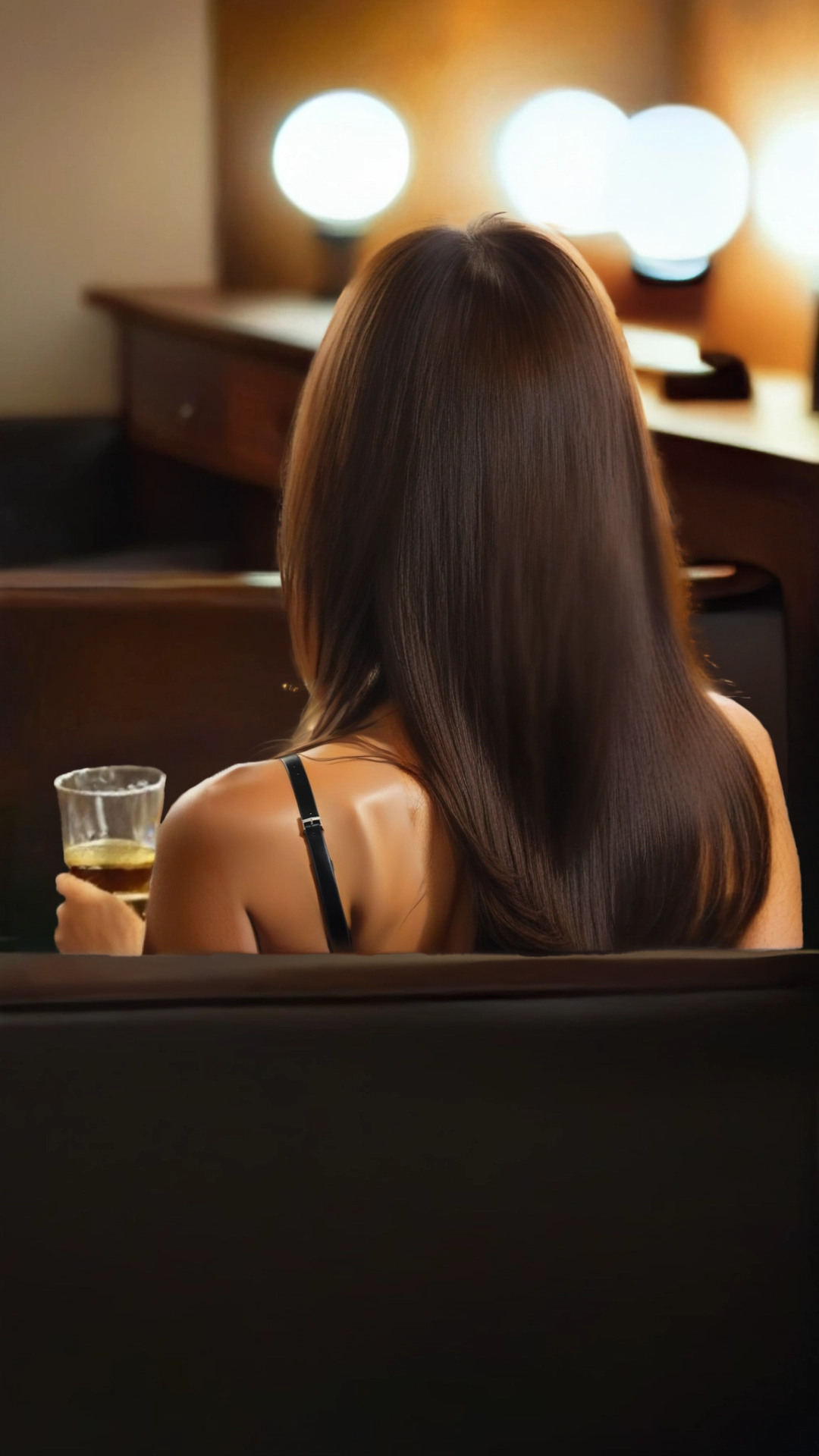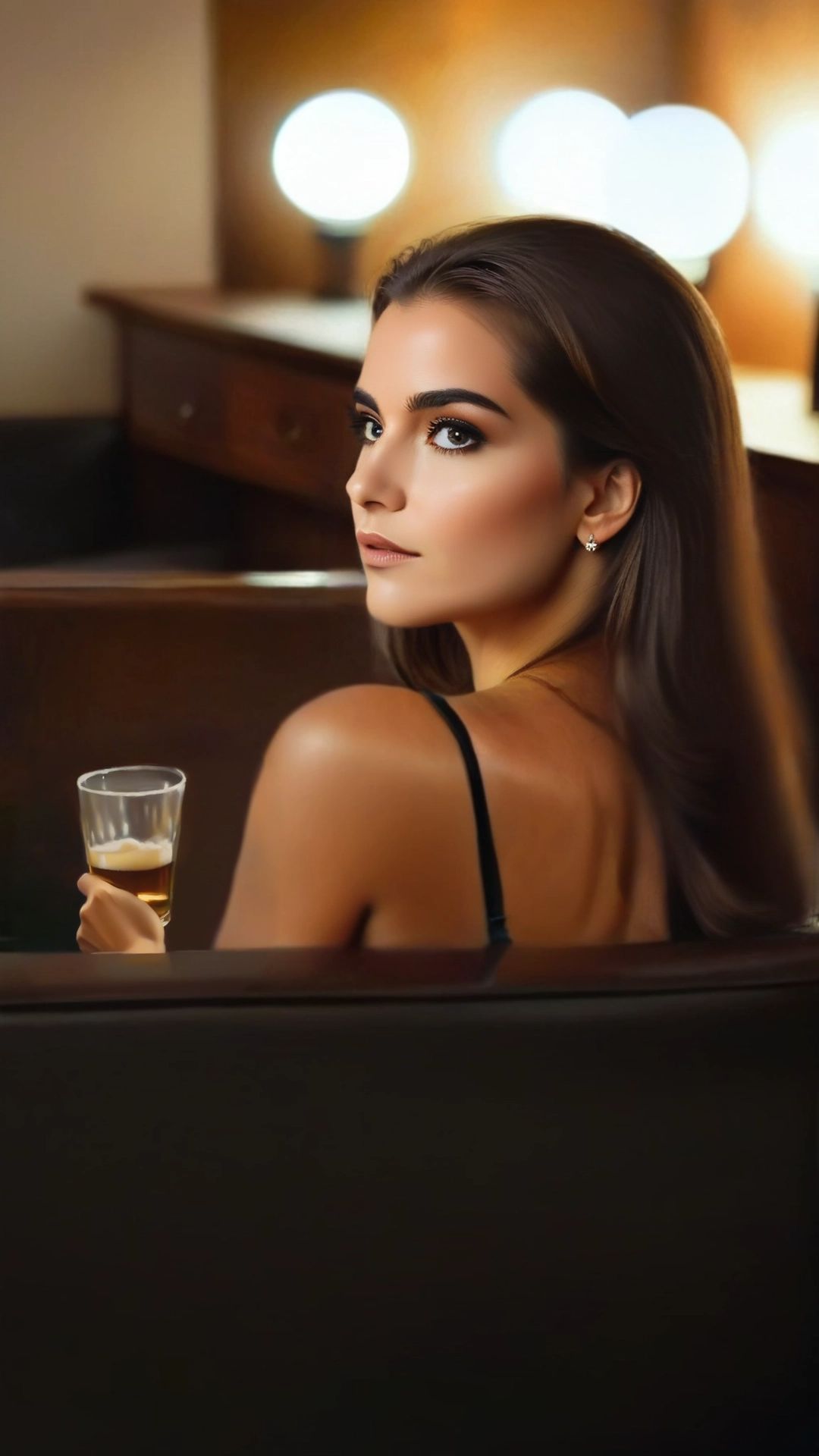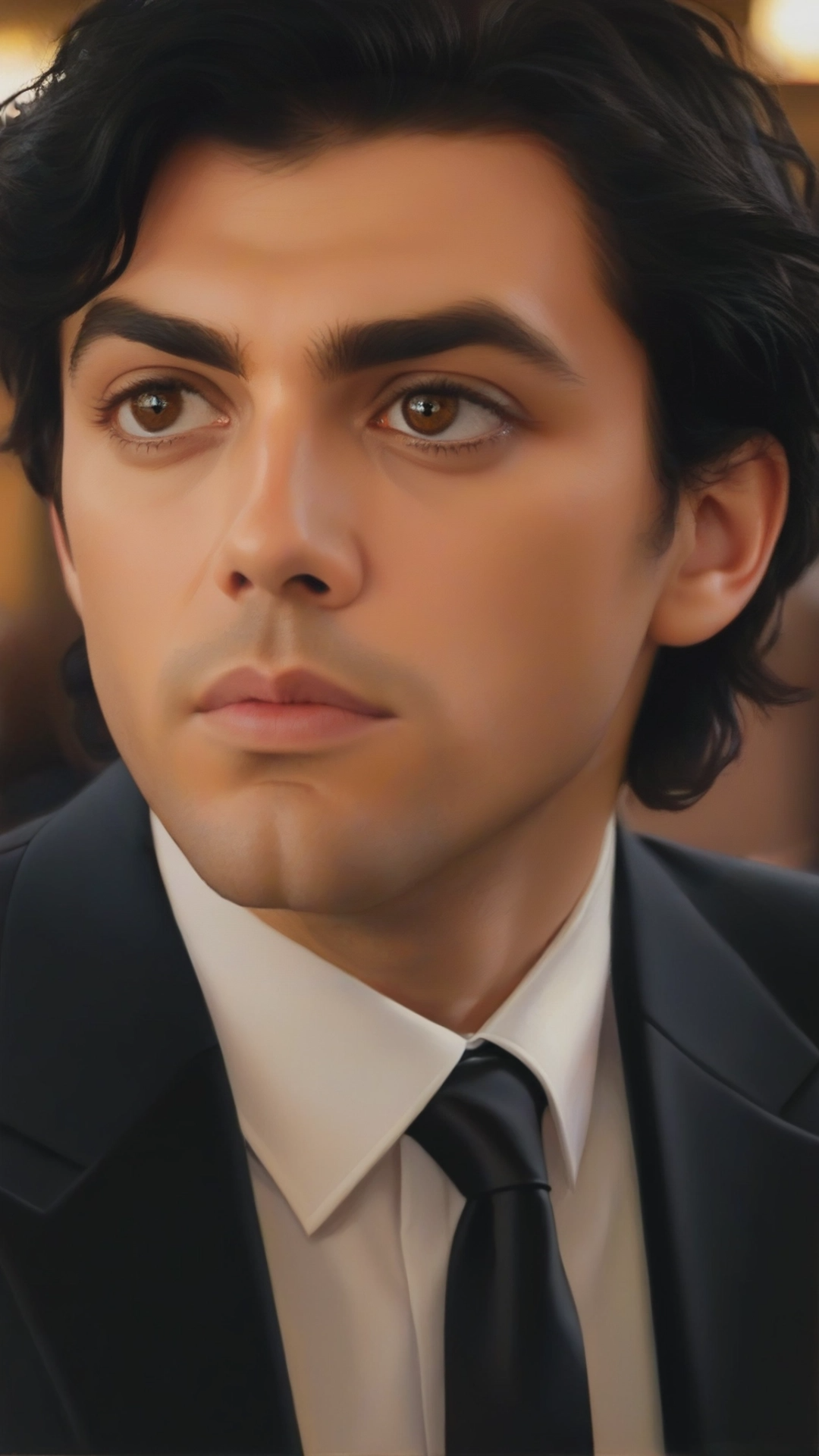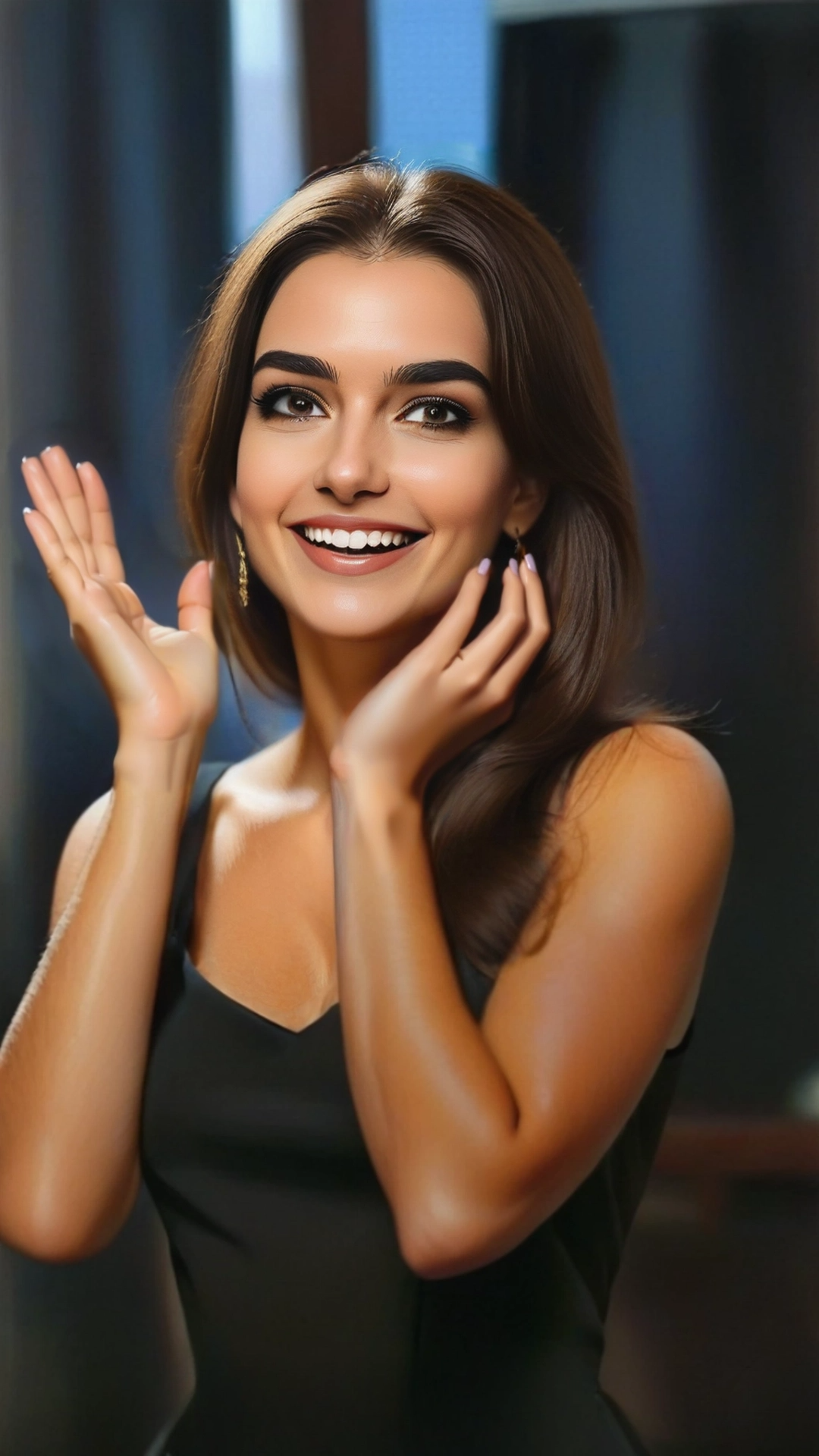---
base_model:
- tencent/HunyuanVideo
library_name: diffusers
---
HunyuanVideo Keyframe Control Lora is an adapter for HunyuanVideo T2V model for keyframe-based video generation. Our architecture builds upon existing models, introducing key enhancements to optimize keyframe-based video generation:
* We modify the input patch embedding projection layer to effectively incorporate keyframe information. By adjusting the convolutional input parameters, we enable the model to process image inputs within the Diffusion Transformer (DiT) framework.
* We apply Low-Rank Adaptation (LoRA) across all linear layers and the convolutional input layer. This approach facilitates efficient fine-tuning by introducing low-rank matrices that approximate the weight updates, thereby preserving the base model's foundational capabilities while reducing the number of trainable parameters.
* The model is conditioned on user-defined keyframes, allowing precise control over the generated video's start and end frames. This conditioning ensures that the generated content aligns seamlessly with the specified keyframes, enhancing the coherence and narrative flow of the video.
| Image 1 | Image 2 | Generated Video |
|---------|---------|-----------------|
|  |  | |
|  |  | |
|  |  | |
|  |  | |
## Recommended Settings
1. The model works best on human subjects. Single subject images work slightly better.
2. It is recommended to use the following image generation resolutions `720x1280`, `544x960`, `1280x720`, `960x544`.
3. It is recommended to set frames from 33 upto 97. Can go upto 121 frames as well (but not tested much).
4. Prompting helps a lot but works even without. The prompt can be as simple as just the name of the object you want to generate or can be detailed.
5. `num_inference_steps` is recommended to be 50, but for fast results you can use 30 as well. Anything less than 30 is not recommended.
## Diffusers
HunyuanVideo Keyframe Control Lora can be used directly from Diffusers. Install the latest version of Diffusers.
```python
from typing import List, Optional, Tuple, Union
import cv2
import numpy as np
import safetensors.torch
import torch
import torchvision.transforms.v2 as transforms
from diffusers import FlowMatchEulerDiscreteScheduler, HunyuanVideoPipeline
from diffusers.callbacks import MultiPipelineCallbacks, PipelineCallback
from diffusers.loaders import HunyuanVideoLoraLoaderMixin
from diffusers.models import AutoencoderKLHunyuanVideo, HunyuanVideoTransformer3DModel
from diffusers.models.attention import Attention
from diffusers.models.embeddings import apply_rotary_emb
from diffusers.models.transformers.transformer_hunyuan_video import HunyuanVideoPatchEmbed, HunyuanVideoTransformer3DModel
from diffusers.pipelines.hunyuan_video.pipeline_hunyuan_video import DEFAULT_PROMPT_TEMPLATE, retrieve_timesteps
from diffusers.pipelines.hunyuan_video.pipeline_output import HunyuanVideoPipelineOutput
from diffusers.pipelines.pipeline_utils import DiffusionPipeline
from diffusers.schedulers import FlowMatchEulerDiscreteScheduler
from diffusers.utils import export_to_video, is_torch_xla_available, load_image, logging, replace_example_docstring
from diffusers.utils.state_dict_utils import convert_state_dict_to_diffusers, convert_unet_state_dict_to_peft
from diffusers.utils.torch_utils import randn_tensor
from diffusers.video_processor import VideoProcessor
from peft import LoraConfig, get_peft_model_state_dict, set_peft_model_state_dict
from PIL import Image
video_transforms = transforms.Compose(
[
transforms.Lambda(lambda x: x / 255.0),
transforms.Normalize(mean=[0.5, 0.5, 0.5], std=[0.5, 0.5, 0.5], inplace=True),
]
)
def resize_image_to_bucket(image: Union[Image.Image, np.ndarray], bucket_reso: tuple[int, int]) -> np.ndarray:
"""
Resize the image to the bucket resolution.
"""
is_pil_image = isinstance(image, Image.Image)
if is_pil_image:
image_width, image_height = image.size
else:
image_height, image_width = image.shape[:2]
if bucket_reso == (image_width, image_height):
return np.array(image) if is_pil_image else image
bucket_width, bucket_height = bucket_reso
scale_width = bucket_width / image_width
scale_height = bucket_height / image_height
scale = max(scale_width, scale_height)
image_width = int(image_width * scale + 0.5)
image_height = int(image_height * scale + 0.5)
if scale > 1:
image = Image.fromarray(image) if not is_pil_image else image
image = image.resize((image_width, image_height), Image.LANCZOS)
image = np.array(image)
else:
image = np.array(image) if is_pil_image else image
image = cv2.resize(image, (image_width, image_height), interpolation=cv2.INTER_AREA)
# crop the image to the bucket resolution
crop_left = (image_width - bucket_width) // 2
crop_top = (image_height - bucket_height) // 2
image = image[crop_top : crop_top + bucket_height, crop_left : crop_left + bucket_width]
return image
model_id = "hunyuanvideo-community/HunyuanVideo"
transformer = HunyuanVideoTransformer3DModel.from_pretrained(model_id, subfolder="transformer", torch_dtype=torch.bfloat16)
pipe = HunyuanVideoPipeline.from_pretrained(model_id, transformer=transformer, torch_dtype=torch.bfloat16)
pipe.to("cuda")
pipe.vae.enable_tiling()
pipe.vae.enable_slicing()
with torch.no_grad(): # enable image inputs
initial_input_channels = pipe.transformer.config.in_channels
new_img_in = HunyuanVideoPatchEmbed(
patch_size=(pipe.transformer.config.patch_size_t, pipe.transformer.config.patch_size, pipe.transformer.config.patch_size),
in_chans=pipe.transformer.config.in_channels * 2,
embed_dim=pipe.transformer.config.num_attention_heads * pipe.transformer.config.attention_head_dim,
)
new_img_in = new_img_in.to(pipe.device, dtype=pipe.dtype)
new_img_in.proj.weight.zero_()
new_img_in.proj.weight[:, :initial_input_channels].copy_(pipe.transformer.x_embedder.proj.weight)
if pipe.transformer.x_embedder.proj.bias is not None:
new_img_in.proj.bias.copy_(pipe.transformer.x_embedder.proj.bias)
pipe.transformer.x_embedder = new_img_in
LORA_PATH = ""
lora_state_dict = pipe.lora_state_dict(LORA_PATH)
transformer_lora_state_dict = {f'{k.replace("transformer.", "")}': v for k, v in lora_state_dict.items() if k.startswith("transformer.") and "lora" in k}
pipe.load_lora_into_transformer(transformer_lora_state_dict, transformer=pipe.transformer, adapter_name="i2v", _pipeline=pipe)
pipe.set_adapters(["i2v"], adapter_weights=[1.0])
pipe.fuse_lora(components=["transformer"], lora_scale=1.0, adapter_names=["i2v"])
pipe.unload_lora_weights()
n_frames, height, width = 77, 1280, 720
prompt = "a woman"
cond_frame1 = load_image("https://content.dashtoon.ai/stability-images/e524013d-55d4-483a-b80a-dfc51d639158.png")
cond_frame1 = resize_image_to_bucket(cond_frame1, bucket_reso=(width, height))
cond_frame2 = load_image("https://content.dashtoon.ai/stability-images/0b29c296-0a90-4b92-96b9-1ed0ae21e480.png")
cond_frame2 = resize_image_to_bucket(cond_frame2, bucket_reso=(width, height))
cond_video = np.zeros(shape=(n_frames, height, width, 3))
cond_video[0], cond_video[-1] = np.array(cond_frame1), np.array(cond_frame2)
cond_video = torch.from_numpy(cond_video.copy()).permute(0, 3, 1, 2)
cond_video = torch.stack([video_transforms(x) for x in cond_video], dim=0).unsqueeze(0)
with torch.no_grad():
image_or_video = cond_video.to(device="cuda", dtype=pipe.dtype)
image_or_video = image_or_video.permute(0, 2, 1, 3, 4).contiguous() # [B, F, C, H, W] -> [B, C, F, H, W]
cond_latents = pipe.vae.encode(image_or_video).latent_dist.sample()
cond_latents = cond_latents * pipe.vae.config.scaling_factor
cond_latents = cond_latents.to(dtype=pipe.dtype)
@torch.no_grad()
def call_pipe(
pipe,
prompt: Union[str, List[str]] = None,
prompt_2: Union[str, List[str]] = None,
height: int = 720,
width: int = 1280,
num_frames: int = 129,
num_inference_steps: int = 50,
sigmas: List[float] = None,
guidance_scale: float = 6.0,
num_videos_per_prompt: Optional[int] = 1,
generator: Optional[Union[torch.Generator, List[torch.Generator]]] = None,
latents: Optional[torch.Tensor] = None,
prompt_embeds: Optional[torch.Tensor] = None,
pooled_prompt_embeds: Optional[torch.Tensor] = None,
prompt_attention_mask: Optional[torch.Tensor] = None,
output_type: Optional[str] = "pil",
return_dict: bool = True,
attention_kwargs: Optional[Dict[str, Any]] = None,
callback_on_step_end: Optional[Union[Callable[[int, int, Dict], None], PipelineCallback, MultiPipelineCallbacks]] = None,
callback_on_step_end_tensor_inputs: List[str] = ["latents"],
prompt_template: Dict[str, Any] = DEFAULT_PROMPT_TEMPLATE,
max_sequence_length: int = 256,
image_latents: Optional[torch.Tensor] = None,
):
if isinstance(callback_on_step_end, (PipelineCallback, MultiPipelineCallbacks)):
callback_on_step_end_tensor_inputs = callback_on_step_end.tensor_inputs
# 1. Check inputs. Raise error if not correct
pipe.check_inputs(
prompt,
prompt_2,
height,
width,
prompt_embeds,
callback_on_step_end_tensor_inputs,
prompt_template,
)
pipe._guidance_scale = guidance_scale
pipe._attention_kwargs = attention_kwargs
pipe._current_timestep = None
pipe._interrupt = False
device = pipe._execution_device
# 2. Define call parameters
if prompt is not None and isinstance(prompt, str):
batch_size = 1
elif prompt is not None and isinstance(prompt, list):
batch_size = len(prompt)
else:
batch_size = prompt_embeds.shape[0]
# 3. Encode input prompt
prompt_embeds, pooled_prompt_embeds, prompt_attention_mask = pipe.encode_prompt(
prompt=prompt,
prompt_2=prompt_2,
prompt_template=prompt_template,
num_videos_per_prompt=num_videos_per_prompt,
prompt_embeds=prompt_embeds,
pooled_prompt_embeds=pooled_prompt_embeds,
prompt_attention_mask=prompt_attention_mask,
device=device,
max_sequence_length=max_sequence_length,
)
transformer_dtype = pipe.transformer.dtype
prompt_embeds = prompt_embeds.to(transformer_dtype)
prompt_attention_mask = prompt_attention_mask.to(transformer_dtype)
if pooled_prompt_embeds is not None:
pooled_prompt_embeds = pooled_prompt_embeds.to(transformer_dtype)
# 4. Prepare timesteps
sigmas = np.linspace(1.0, 0.0, num_inference_steps + 1)[:-1] if sigmas is None else sigmas
timesteps, num_inference_steps = retrieve_timesteps(
pipe.scheduler,
num_inference_steps,
device,
sigmas=sigmas,
)
# 5. Prepare latent variables
num_channels_latents = pipe.transformer.config.in_channels
num_latent_frames = (num_frames - 1) // pipe.vae_scale_factor_temporal + 1
latents = pipe.prepare_latents(
batch_size * num_videos_per_prompt,
num_channels_latents,
height,
width,
num_latent_frames,
torch.float32,
device,
generator,
latents,
)
# 6. Prepare guidance condition
guidance = torch.tensor([guidance_scale] * latents.shape[0], dtype=transformer_dtype, device=device) * 1000.0
# 7. Denoising loop
num_warmup_steps = len(timesteps) - num_inference_steps * pipe.scheduler.order
pipe._num_timesteps = len(timesteps)
with pipe.progress_bar(total=num_inference_steps) as progress_bar:
for i, t in enumerate(timesteps):
if pipe.interrupt:
continue
pipe._current_timestep = t
latent_model_input = latents.to(transformer_dtype)
timestep = t.expand(latents.shape[0]).to(latents.dtype)
noise_pred = pipe.transformer(
hidden_states=torch.cat([latent_model_input, image_latents], dim=1),
timestep=timestep,
encoder_hidden_states=prompt_embeds,
encoder_attention_mask=prompt_attention_mask,
pooled_projections=pooled_prompt_embeds,
guidance=guidance,
attention_kwargs=attention_kwargs,
return_dict=False,
)[0]
# compute the previous noisy sample x_t -> x_t-1
latents = pipe.scheduler.step(noise_pred, t, latents, return_dict=False)[0]
if callback_on_step_end is not None:
callback_kwargs = {}
for k in callback_on_step_end_tensor_inputs:
callback_kwargs[k] = locals()[k]
callback_outputs = callback_on_step_end(pipe, i, t, callback_kwargs)
latents = callback_outputs.pop("latents", latents)
prompt_embeds = callback_outputs.pop("prompt_embeds", prompt_embeds)
# call the callback, if provided
if i == len(timesteps) - 1 or ((i + 1) > num_warmup_steps and (i + 1) % pipe.scheduler.order == 0):
progress_bar.update()
pipe._current_timestep = None
if not output_type == "latent":
latents = latents.to(pipe.vae.dtype) / pipe.vae.config.scaling_factor
video = pipe.vae.decode(latents, return_dict=False)[0]
video = pipe.video_processor.postprocess_video(video, output_type=output_type)
else:
video = latents
# Offload all models
pipe.maybe_free_model_hooks()
if not return_dict:
return (video,)
return HunyuanVideoPipelineOutput(frames=video)
video = call_pipe(
pipe,
prompt=prompt,
num_frames=n_frames,
num_inference_steps=50,
image_latents=cond_latents,
width=width,
height=height,
guidance_scale=6.0,
generator=torch.Generator(device="cuda").manual_seed(0),
).frames[0]
export_to_video(video, "output.mp4", fps=24)
```